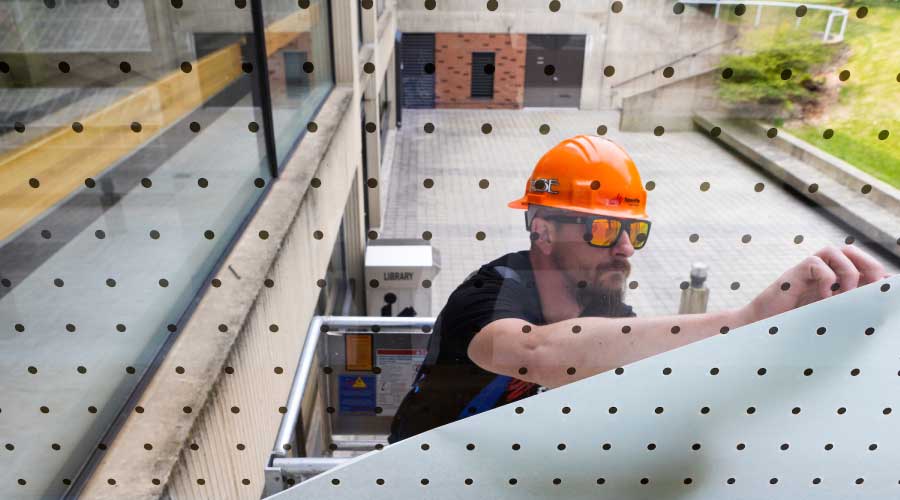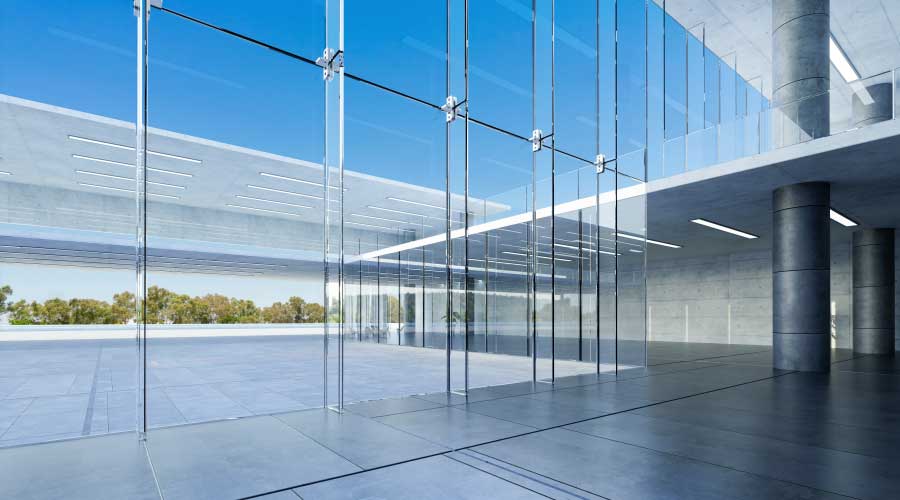Weather-Proofed Windows and Energy Efficiency
The biggest deterrent to energy efficiency at the building envelope (roofs, walls, and windows) is heat loss at exterior components. Implementing various methods to decrease (or eliminate) heat loss at these components is the best way to contribute to overall building performance. Following are some specific considerations for energy efficiency, beginning with weather—proofed windows.
Windows have long been a source of excessive heat loss due to non—energy—efficient materials and components. Now, material technology has advanced to the point where not only are energy—efficient replacement windows available, but methods exist to increase the energy efficiency of existing windows. There are three main methods with existing windows: adding storm windows, weather stripping, or using weather coverings. Adding storm windows reduces air leakage and improves comfort. Applying weather stripping at joint openings eliminates heat loss. Window treatments, such as film, can reduce heat loss in the winter and heat gain in the summer.
If the existing windows are old and inefficient, it may make economic sense to replace them. New energy—efficient windows will help pay for themselves through lower heating and cooling costs and — in some cases — reduced lighting costs. Energy—efficient methods and materials now available include these:
- In colder climates, major glazing should face south to collect solar heat during the winter.
- In warm climates, install overhangs or films on the sun side to prevent excessive heat gain.
- Windows should allow for adequate daylight, but facility managers should plan to minimize heat gain and glare with film, shading, etc., based on the orientation of the windows
- Windows with low solar heat gain coefficients (SHGCs) are more effective in reducing cooling loads.
- When selecting windows for energy efficiency, consider their energy performance ratings in relation to the climate where the building is located.
- A window’s energy efficiency is based on all of its components. For instance, window frames conduct heat and should be considered carefully when selecting a window assembly.
- The type of glazing used should be determined by the building’s orientation, climate, design, and other similar factors.
A prevalent source of increased heat loss is from building joints at windows and exterior walls. Facility managers can use infrared thermography to see the significant amount of heat loss that is generated at these locations. Openings are created when the sealant at the building joint deteriorates. Most building sealants have limited lifespans, and facility executives should view them as they do other maintenance components throughout the building, inspecting them regularly and restoring or replacing them as needed.
Intersection of Exteriors and Interiors
Exterior strategies can also affect interior energy. Here are two ways that’s true.
- One way to use exterior components in reducing energy use at the interior is lighting. Energy savings can be achieved by implementing daylighting — the process of allowing more natural light into the building. That strategy is implemented at the building envelope, but must be coordinated with interior elements. This is achieved at the building envelope through more exterior window space, and from skylights and glass panels at the roof level. Studies have indicated that in addition to reducing electrical costs (since less interior lighting is required), the added light increases occupant satisfaction.
- Another method is solar and PV panels. Solar technology has advanced significantly in the past decade and its use is increasing in commercial and industrial buildings. Many local electrical utility companies have developed programs with facility executives that provide cost savings and incentives for implementing solar panels in buildings. Ford Motor Co. recently installed solar panels at its World Headquarters Complex in Dearborn, Mich., in a program sponsored by the local utility company. Ford and other automotive manufacturers have had solar panels on several of their production and assembly plants for years.
|
Related Topics:












